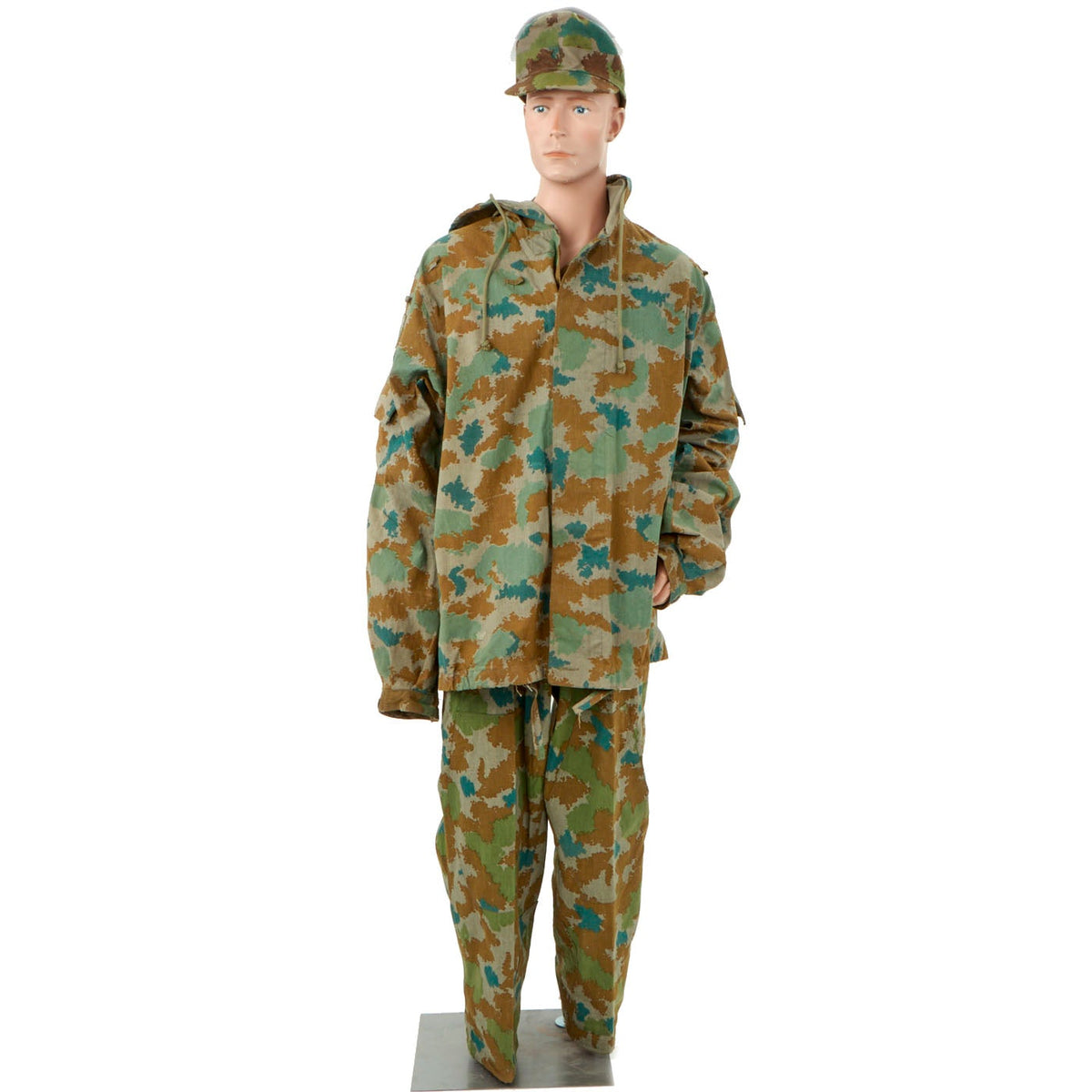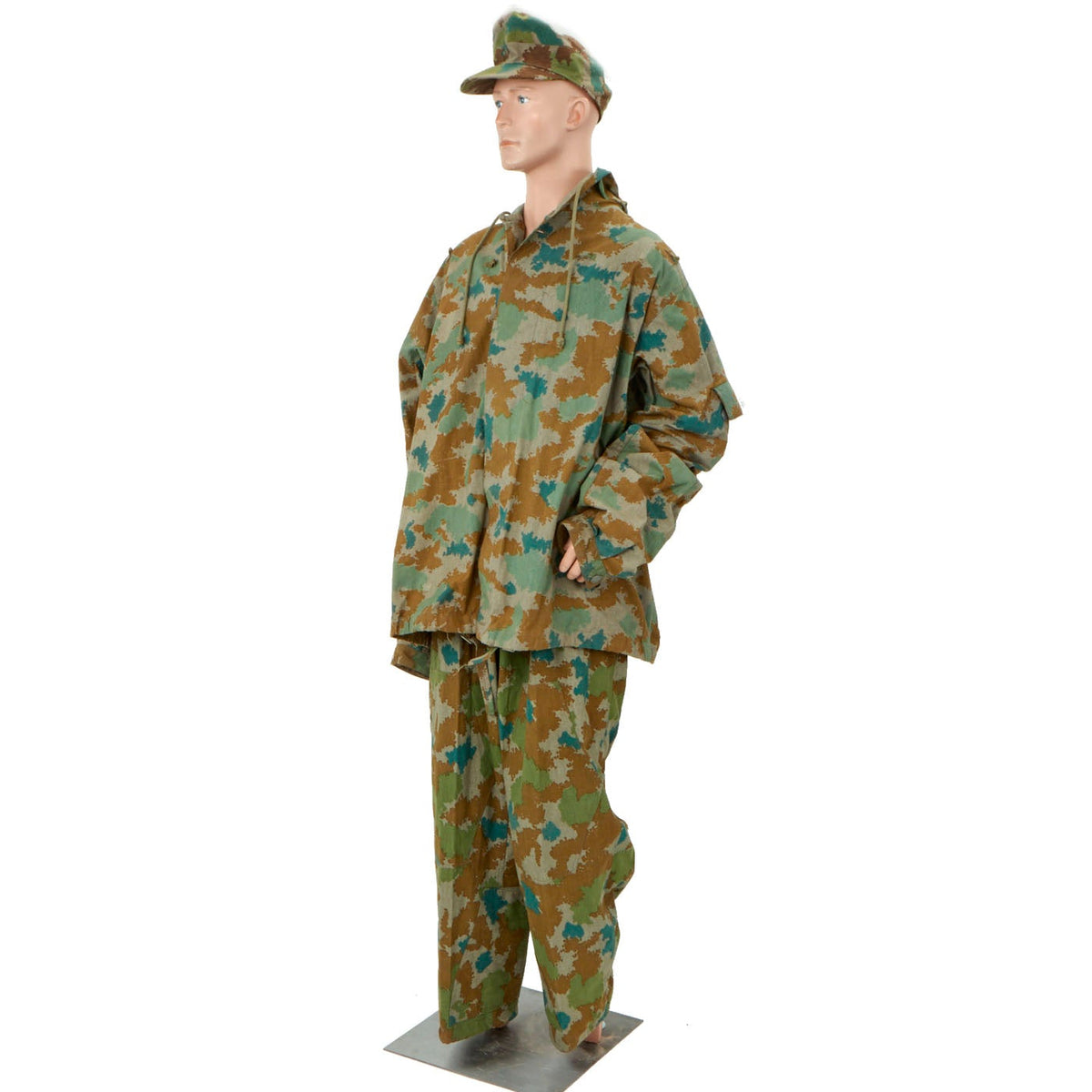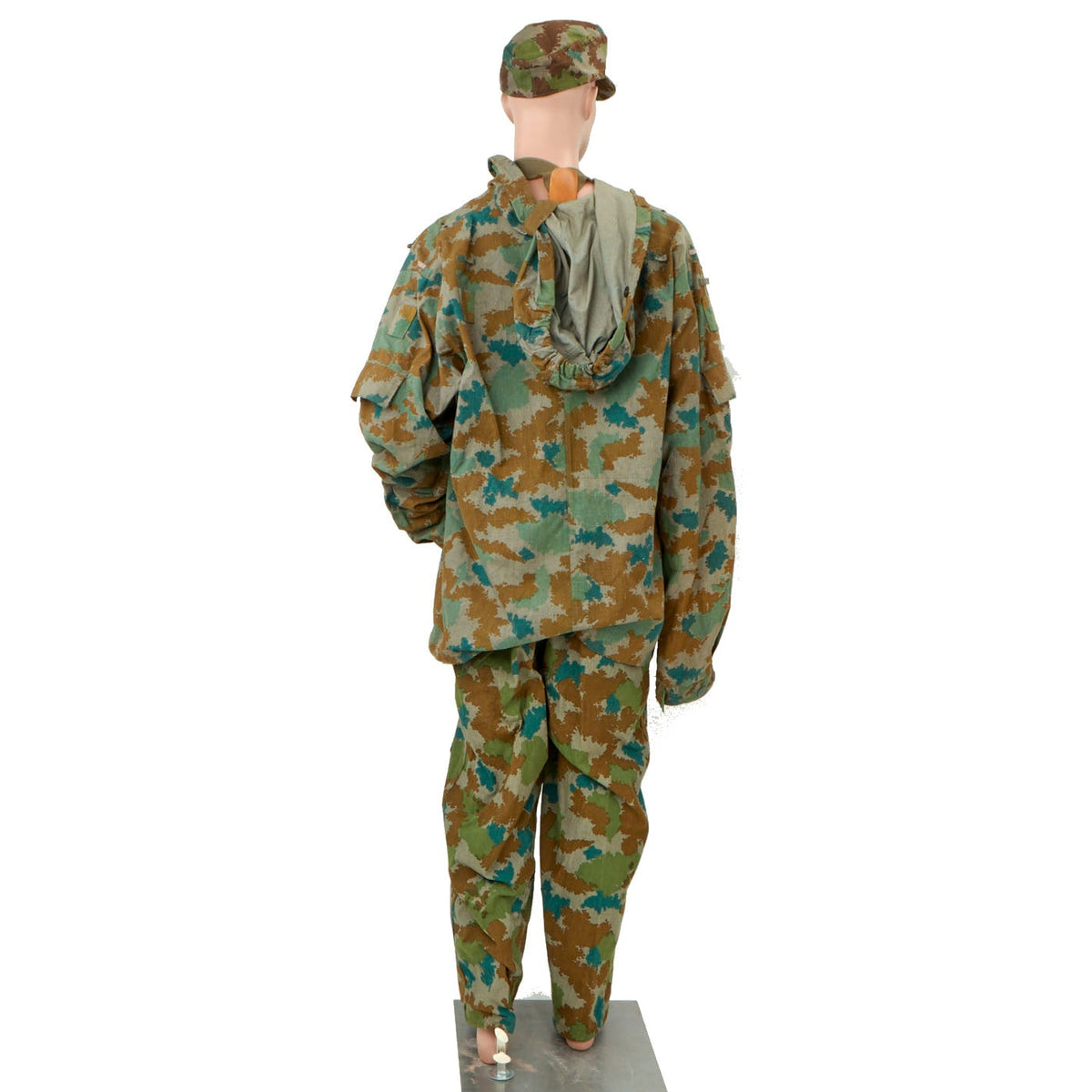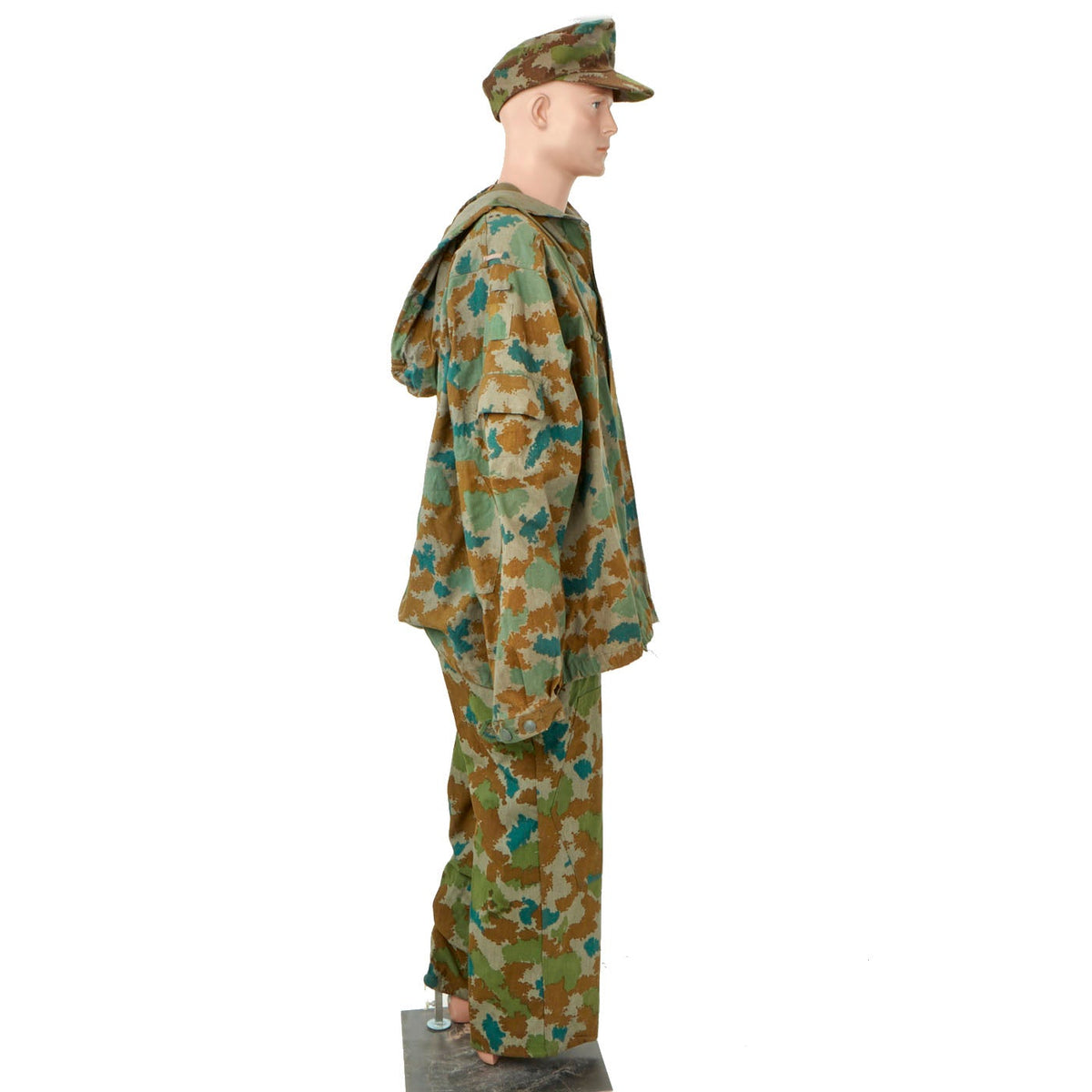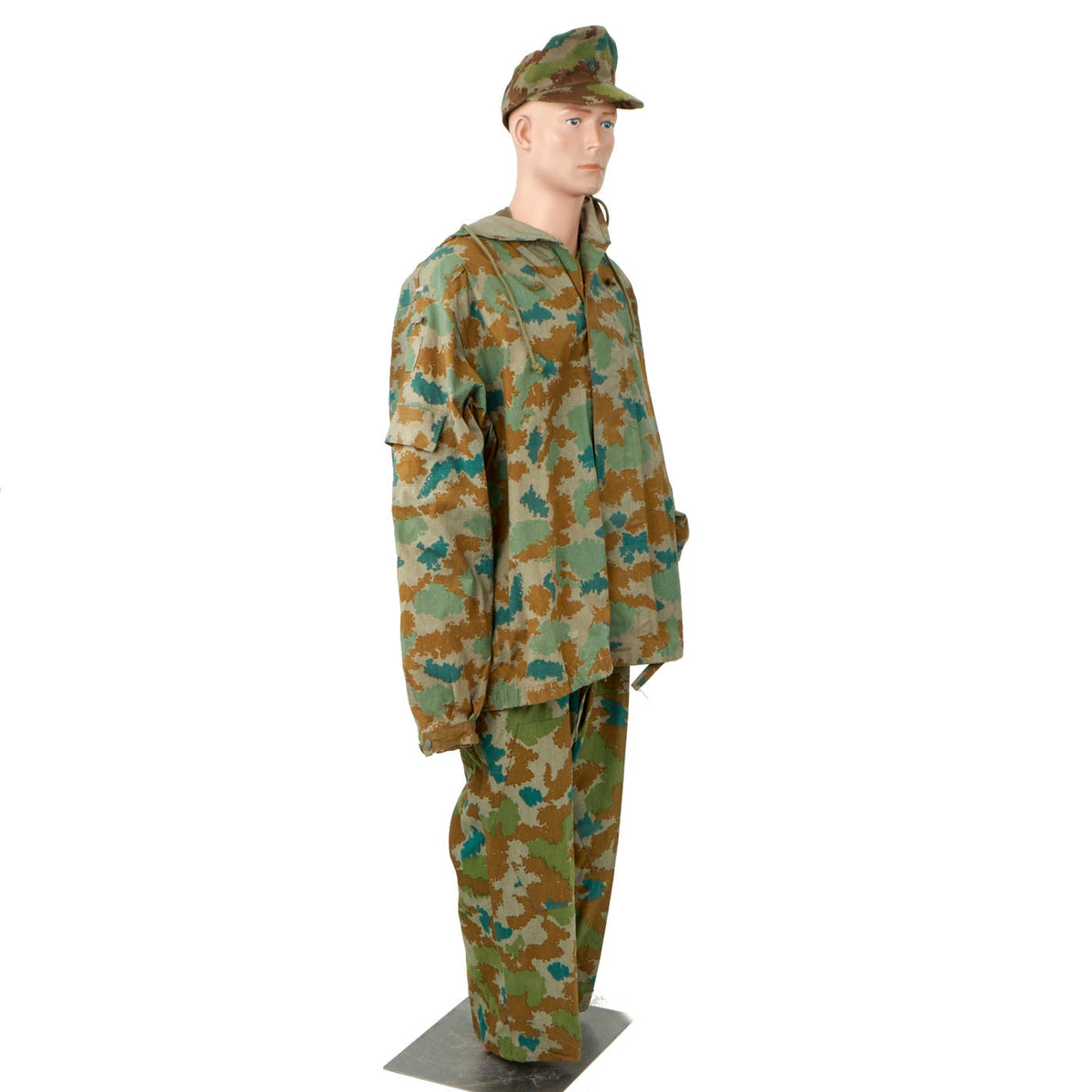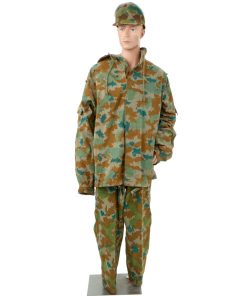Original Cold War East German Unissued M58 Flachentarn Blumentarn Camouflage Uniform – Cap, Smock, and Trousers (Size Large) Original Items
$ 795,00 $ 238,50
Original Items: Only Ones Available. One of the most sought after patterns amongst camouflage collectors is the early DDR East German Blumentarn. This is quite possibly the finest set we have ever located, and in a large size!
This unissued condition set of Blumentarn is in excellent condition. There are no holes, tears or stains on any piece of this grouping. All buttons are intact. The trousers even come with an issue set of suspenders. Jacket is dated 1963, and the Trousers 1962. Both Smock and Trousers are nicely marked. The cap is roughly a size 7 ⅛ and there are no markings that could be found. Smock (jacket) is marked size “4”, and the trousers size “3”.
The M58 Flächentarn pattern was issued between 1956 and 1967 to units in the East German Army (NVA) and Ministry of Interior (MDI). Also nicknamed “Kartoffelmuster” (potato camouflage) or “Blumentarn” (flower camouflage), the pattern generally consists of blue-green, olive green & brown ragged blotches on a field grey background. Several mild color variations have been documented, some of which may appear darker due to their having been coated in anti-gas chemicals (which also gave the fabric a waxy texture). Several types of jacket, trousers, field equipment, shelter half and hood/helmet cover were produced in this pattern.
These were a specialized item of issue originally. The camouflage combat suit was intended to be worn over the regulation service uniform. This two piece Blumentarn pattern camouflage suit was shown in the 1959-1960 uniform regulations along with the rain cape. This “splotch” or so called “potato” pattern combat suit was worn over the service uniform with a grey web belt and Y straps for the matching Blumentarn camouflage assault pack system. The jacket had a large attached camo pattern hood and various loops in which foliage could be placed. This 1st pattern of camouflage combat suit had no provision for shoulder boards as rank insignia was envisioned as being a series of cloth bars sewn onto the left sleeve. Later versions of this combat suit did have provisions for wearing shoulder boards to indicate rank. The matching loose camouflage trousers were worn over the top of the boots.
The early Blumentarn combat suit was worn by Grenzpolizei and there were several refinements and variations that will be found such as the shape and placement of foliage loops, button types, hood variations, and method of showing rank to name a few. Later Grenztruppen troops also wore and tested the second pattern of camouflage called Strichtarn or rain pattern that was also called the “one-stripe-no-stripe-suit” by soldiers. This Strichtarn rain pattern combat suit was finally adopted as the “DV-10/5. edition 1965” field service outfit. Interestingly, the Blumentarn pattern suit continued to be manufactured and issued until the late 1960s.
A very rare, and desirable, set of camouflage on today’s market… especially in this condition and size!
Fast Shipping with Professional Packaging
Thanks to our longstanding association with UPS FedEx DHL, and other major international carriers, we are able to provide a range of shipping options. Our warehouse staff is expertly trained and will wrap your products according to our exact and precise specifications. Prior to shipping, your goods will be thoroughly examined and securely secured. We ship to thousands clients each day across multiple countries. This shows how we're dedicated to be the largest retailer on the internet. Warehouses and distribution centres can be located throughout Europe as well as the USA.
Note: Orders with more than one item will be assigned a processing date depending on the item.
Before shipping before shipping, we'll conduct a thorough inspection of the items you have ordered. Today, the majority of orders will be delivered within 48 hours. The delivery time will be between 3-7 days.
Returns
The stock is dynamic and we cannot completely manage it because multiple stakeholders are involved, including our factory and warehouse. So the actual stock may alter at any time. It's possible that you may not receive your order once the order has been made.
Our policy is valid for a period of 30 days. If you don't receive the product within 30 days, we are not able to issue a refund or an exchange.
You can only return an item if it is unused and in the same state as the day you received it. You must have the item in its original packaging.
Related products
Uncategorized
Uncategorized
Uncategorized
Uncategorized
Armored Burgonet Helmet & Polearm from Scottish Castle Leith Hall Circa 1700 Original Items
Uncategorized
Uncategorized
Australian WWII Owen MK1 Machine Carbine SMG Custom Fabricated Replica with Sling Original Items
Uncategorized
Uncategorized
Band of Brothers ORIGINAL GERMAN WWII Le. F.H. 18 10.5cm ARTILLERY PIECE Original Items
Uncategorized
Uncategorized
Uncategorized
Uncategorized
Uncategorized
Uncategorized
Uncategorized
Uncategorized
Uncategorized
Armoured Fighting Vehicles of the World: AFVs of World War One (Hardcover Book) New Made Items
Uncategorized
Uncategorized
Uncategorized
